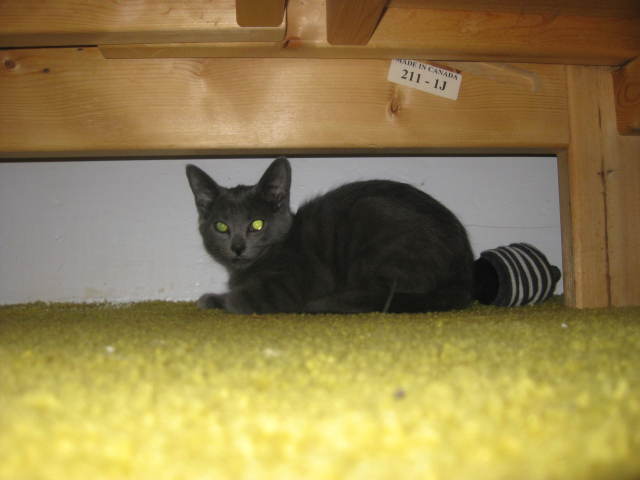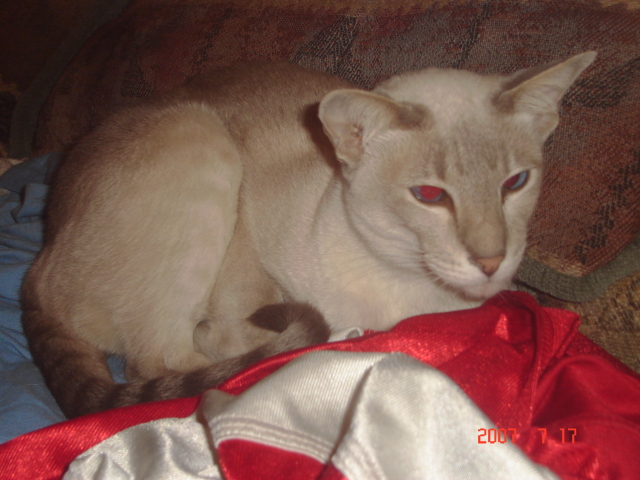QuestionHi Jessica,
I have a feral cat - 8 years old. He has only been to the vet once
and he tore the place apart (including the doctor). He's very
scared and I can't touch him or pick him up - even after 8 years,
but I love him and he gets along with my other cat very well.
Recently, he has been having problems eating hard food - as if
he cant' chew or the food is getting lodged. I switched him to
soft food, which he eats but he has lost a little weight. Today I
found one of his canine teeth on the floor and I'm not sure what
to do. I can't get him to a doctor so I'd like to do whatever I can
for him at home. Any suggestions would be greatly appreciated.
Thank you so much,
Nicole (and Ralph!)
AnswerHi Nicole. I definitely identify with you, since rescuing ferals is my main work. You really need to find some way to get him to the vet, however. Periodontal disease causes much more than pain. It leaves gaps in the gums. Bacteria can enter the bloodstream through these gaps and infect the heart, liver and kidneys (and any other organ), causing irreversible failure.
This is no easy feat, to be sure! I would ask the vet if he could give you a sedative that would make catching and handling him easier. My vet prescribes acepromazine for the hardest of my ferals. I just wrap it in a piece of sandwich meat and put it as close to the kitty as I can get. They swallow it whole. It says to give it one hour prior to the visit, but I personally find it doesn't reach its full efficacy for about 8 hours.
Or, you may end up needing to trap him. Your local animal officer or animal shelter may have live traps you can borrow. You'd need to keep your other cat behind closed doors, or you're likely to trap him and not Ralph.
If you feel Ralph was too much of a challenge for your vet, you might want to call around and see if there's a vet with lots of experience with ferals. The vet may suggest a squeeze cage, a cage that collapses to literally gently squeeze the cat to one side so an injection of a sedative may be given if absolutely necessary. Vets who work with ferals will usually have these available to lend. Also, most vets have a canvas bag that they can put the cat's body in. It zips up and leaves only the head exposed. It's great for preventing scratches and keeping the cat from climbing the walls during exams.

 Shaking? Or is it from her purr?
Question
Prada Under our bed
We just adopted a Himalaya
Shaking? Or is it from her purr?
Question
Prada Under our bed
We just adopted a Himalaya
 wonderin??
Question
CIara
Hi Karen,
This is my first time dealing
wonderin??
Question
CIara
Hi Karen,
This is my first time dealing
 Siamese tracks feces around the house
Question
Dirty Foot
I recently adopted a wonderf
Siamese tracks feces around the house
Question
Dirty Foot
I recently adopted a wonderf
 Persian Male Behavioral Issues.
Question
Jimmy
Dear Karen
Hope you are fine. I
Persian Male Behavioral Issues.
Question
Jimmy
Dear Karen
Hope you are fine. I
 What breed/mix is my cat?
QuestionSugar and Oliver
QUESTION: Hi,
Im wond
What breed/mix is my cat?
QuestionSugar and Oliver
QUESTION: Hi,
Im wond